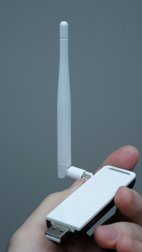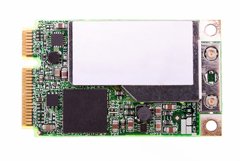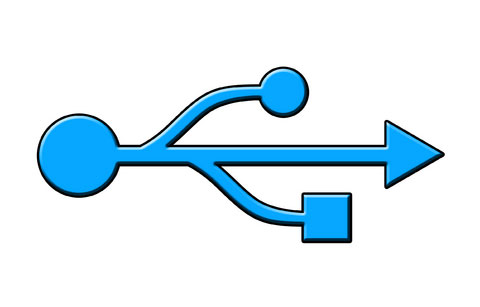Wireless Internet cards
Approaching anytime anywhere Internet
Wireless Internet cards enable computers to connect to wireless Internet Access Points without a cable. But they aren’t all the same.
Why do you need wireless Internet cards?
You need them so your computer can connect to the Internet via a wireless Internet Access Point, without an interconnecting cable. Let’s face it, nobody wants to be tethered by a 3m Internet cable.
So what’s the alternative?
One type of wireless Internet access
point may be a short range Wireless Local Area Network (WLAN). This will
typically work over distances up to a few meters/feet away from the
wireless access point antenna.
You have freedom to move around, but within a smallish area.
But what if you aren’t close enough to connect to the Internet via a WLAN, or don’t have access to a WLAN?
A good, though more expensive option,
is to access your Provider’s Internet service using the wider range
cellular system. Your mobile phone also uses this network.
With this arrangement you’d subscribe
to an ISP’s data plan and, depending on the service, enjoy the benefits
of ‘anytime, anywhere’ high speed Internet, provided you have cellular
coverage. In general, if your mobile phone works then it’s likely your
Internet connection will too, if you use the same provider or carrier
for both.
What are wireless Internet cards?
An electronic device that, when installed in your computer, enables it to send information to the Internet and receive information from it, via a wireless access point.

A wireless system may let several devices connect to the Internet, using radio frequency energy to carry the information instead of a cable.
This gives you terrific freedom, lots of choices and is great for a home wireless Internet connection.
To make this two-way transfer of information possible...
Wireless Internet cards communicate with two things...They communicate with the computers they’re installed in.
The card physically plugs into a computer, making a direct physical and electrical connection between them.
The computer controls the card, via the
electrical connection, and sends to the card the information it wants
the card to send to the Internet. The computer also receives Internet
information from the card.
They communicate with the wireless Internet access point.
Not through a physical connection but
through a radio link. For a home wireless Internet connection the access
point may be a wireless router that’s connected to an Internet Service
Provider’s cable, via a cable Modem. This provides the wireless
connection to the wireless Internet access cards in the computers and
the router manages the connection to the ISP’s network.
Types of wireless Internet cards
All types of wireless Internet cards perform the same broad functions, but come in different styles to suit...
- the computer they’ll be installed in – they have to physically fit and be electrically compatible
- the wireless network they’ll connect to – they need to be able to communicate with the network so belong to the same ‘family’

Cards for notebooks are usually physically smaller than cards for desktops because smaller computers, such as notebooks, have less space available.
Wireless Internet cards come in different styles to fit desktops, laptops, notebooks and PDAs.
Cards come in different styles or form factors.
PCI Express cards have superseded the older PC Card and CardBus cards. These
were designed to PCMCIA standards and connected to the computer’s
parallel bus, whereas the Express cards connect via a serial bus.
If you have an incompatible card/slot, you may be able to buy an
adaptor.
PCI Express Cards
PCI Express Card technology makes wireless Internet cards smaller, perform better and cost less than their predecessors.
The basic Express Card comes in three sizes...ExpressCard34 is 34mm x 75mm x 5mm
ExpressCard54 is 54mm x 75mm x 5mm
To your computer, these cards will look
the same. The larger one is just used where the designer needs the extra
room for additional electronic components in some applications. The
larger card may also allow more opportunity to get rid of excess heat
generated by a busy high-speed application.
There’s also a smaller version called the PCI Express Mini card that’s commonly used in smaller computers such as notebooks.
Express Mini Card is 30mm x 51mm x 5mm
There are Express cards for PCs, laptops and notebooks.
USB
Universal Serial Bus (USB) cards and Express cards appear similar in operation to the user.
You can install some wireless Internet
cards inside the computer and plug others in externally. USB wireless
Internet cards are great for external connection and provide the
flexibility to move between different computers and take your Internet
account with you.
Some wireless Internet access cards
connect to an Internet access point via a short range Local Area Network
(LAN). Wireless N is currently the most popular.
Learn about Wireless N Adapters.
Others connect to a Metropolitan Area Network (MAN) or Wide Area Network (WAN).
Things to look for in wireless Internet cards
Let’s consider this high-level question first.
Wi-Fi or cellular?
If you only want to access the Internet
in your house or office, then Wi-Fi is the way to go because it’s much
cheaper than cellular.
If you’re not too worried about price,
use wireless Internet cards that use the Wireless N (IEEE 802.11n) data
link protocol, rather than Wireless G (now-superseded).
Find out about the 802.11n standard.
You can also access free wireless Internet
locations at the public wireless hotspots offered by cafes, hotels,
airports and other public places.
But if you’re worried about price, and
want to set up a home network using cheaper, or free hardware, then the
Wireless G standard for both wireless Internet access cards and a
wireless router may be quite adequate.Find out about cheap wireless routers
In general, if the data link protocol
specification is the same for the devices at both ends of the link, for
example Wireless N, then you can be confident that the devices will
‘speak the same language’ and, in this and other ways, be compatible
with each other. These standards ensure that devices will work with each other.
If you move from place to place, you’re
not too worried about ongoing data costs, and want to access the
Internet anywhere (ideally), then cellular is the way to go.
High speed 4th generation (4g) is becoming increasingly available and may even let you access the Internet while you’re moving from place to place. WiMAX and LTE support 4g broadband for wireless mobile Internet service.
Some cards require a plug-in SIM card.
Once you’ve decided between local area (Wi-Fi) or wide area (cellular) you’ll need to see what cards are available and decide...
Will this style of wireless Internet cards fit my computer?
If you’re one of a few that can still
find the user manual that came with your computer, check to see what
card slots are available.
If you can’t find it, and if you’re not already familiar with computer card slots, you can either...
Look for the information on the Internet, or...
measure the width of each slot to identify the type of card that you can plug into it.
Around 12mm, or half an inch, is USB.
34mm, or around 1.3 inches, is ExpressCard
34
54mm, or around 2.1 inches, is ExpressCard54
Before you commit a slot to one of the
wireless Internet cards you should make sure that you aren’t going to
want to plug anything else into it.
USB (Universal Serial Bus) is possibly the most common and widely known. It’s easy to recognize. The slot has a symbol like this.

Want a superior wireless link?
One of the nice things about a USB card
is that you can have it on a cord and get its antenna away from the
computer, or other obstructions, and into a clearer area for
transmitting and receiving radio signals. Therefore, a better quality
wireless link.
Features
One feature to look for, if you’re in a building with lots of obstacles and people moving around, is MIMO.
The top-shelf wireless N products feature this so-called diversity system… and it’s rather clever.
It grabs the signals reflected by still
and moving objects, to intelligently enhance the quality of the overall
signal. It effectively claws back radio signals that would otherwise be
unusable, and uses them to reinforce, enhance and improve the quality
of what might otherwise be low quality communications.
Clever stuff.
Diversity reception is an old idea with a modern application. But it uses more hardware so costs a bit more.
Many cards are just ‘plug and play’.
Your computer will identify if when you plug it in and will
automatically load whatever software drivers the card requires for it to
work.
Go from Wireless Internet Cards To How Does Wireless Internet Work?


